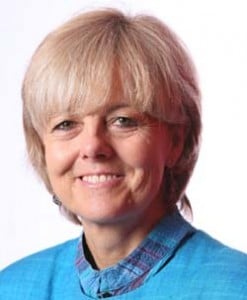A row is brewing between the Law Society and the Legal Services Consumer Panel over the make-up of the Solicitors Regulation Authority (SRA) board, Legal Futures can reveal.
In its recently published regulatory independence certificate – which certifies compliance with the Legal Services Board’s (LSB) internal governance rules or indicates how it will become compliant – the Law Society says it has no intention of taking active steps to remove the solicitor majority on the SRA board until the current members’ terms end in 2013.
However, earlier this month, panel chairwoman Dr Dianne Hayter highlighted the importance of the requirement in the rules for regulatory boards to have a lay majority, and for their chairmanship not to be restricted by virtue of any legal qualification (so far the SRA chairman has had to be a solicitor). In a letter to LSB chairman David Edmonds (see story), Dr Hayter described this as “an area where change in the current composition of these structures will be necessary in order to achieve compliance”.
She continued: “The panel would find it unacceptable if the frontline regulators were simply to wait for the terms of their current board members to expire… In the case of the Law Society, this would mean that the Solicitors Regulation Authority would not have a majority of lay members until 2013 – six years after the passage of the Legal Services Act.” Dr Hayter urged the LSB to “show strength” and not allow “any watering down of the lay majority requirement”.
Published by the LSB last week, the certificate – signed jointly by the Law Society and SRA – was submitted on 17 June, six weeks after the deadline, a delay which prompted Dr Hayter’s letter. In it, the society says: “Unless some existing solicitor members were to step down, the board could not become compliant without enlargement beyond its current size of 16 members through the recruitment of additional lay members (whether all at once or on a phased basis). It could not become compliant in relation to the role of chair without a new selection process open to lay applicants.
“In the Law Society and SRA’s view, such solutions are disproportionate and would be likely to prove highly disruptive to the SRA’s ongoing work and its substantial programme of regulatory reform. The Law Society and the SRA propose to proceed to compliance on a phased basis over the coming three years, and so by that means reaching the goal of a lay majority board with minimal disruptions to the work of the board or the SRA as a whole.”
The consumer panel will examine the certificates submitted by the Law Society and the other regulators, and the LSB will issue its verdict on them by the end of July.
Last week Legal Futures also received the Law Society’s comment on Dr Hayter’s letter. It said: “The joint certificate has been submitted. If the LSB Consumer Panel seeks to identify the Law Society rather than using a descriptive for the SRA and TLS, they would be better advised to understand all the facts before rushing to judgement.”
The two intellectual property bodies – the Chartered Institute of Patent Attorneys and the Institute of Trade Mark Attorneys – share a regulator and are the only ones yet to submit their certificates, which was also criticised by Dr Hayter. In a joint statement, they said: “The letter is not addressed to ITMA/CIPA. Doubtless the LSB will reply as it thinks appropriate. We have been in regular dialogue with the LSB regarding the certificate and therefore do not propose to make any comment at this stage.”















Leave a Comment